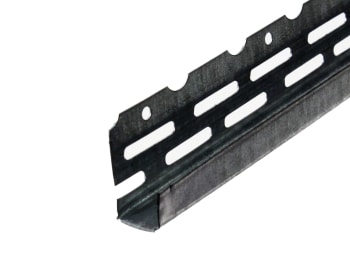Plasterboard Beads
(6 Products)Drylining beads are used in conjunction with plasterboard to reinforce drywall and plastering systems at corners or returns. They protect the edging at its weakest, most vulnerable point, keeping the edges sharp and reducing impact damage. Angle beads are used around windows, stairwells, support beams, and solid surfaces whilst edge beads are used where plasterboard meets doors, stone walls and different building materials. Check out our fantastic range of plasterboard beads for your next project.
What Is Plasterboard Beading?
Plasterboard beading is sectional lengths of metal (such as galvanised steel), or plastic, with a centre line and two-wing profile. Their purpose is to fasten to two sheets of plasterboard, achieving a perfect joint.
Edge beads and angle beads offer many benefits when installing plasterboard, with the prime advantage being the smooth surface they create. Beads achieve this by reinforcing corners or edges, allowing for a professional finish.
Types of Plaster Beading
Where To Use Plasterboard Beads?
Plasterboard beads are typically used in specific areas and situations to reinforce and enhance plasterboard installations.
Common uses include:
- External corners for clean, protected edges.
- Around window and door openings for support.
- Ceiling corners for a clean finish.
- Drywall joints for smooth seams.
- Wall-to-ceiling transitions for neat results.
- High-traffic areas for added protection.
- Any project requiring a professional finish.
Frequently Asked Plasterboard Beads Questions
Frequently Asked Questions About Plasterboard Beading
How To Cut Plaster Beading To Length
Mark all of the necessary measurements, then take your tin snips and cut in accordance with your markings. Cut inwards from both sides, leaving the centre intact. Bend the bead until it breaks.
Wearing gloves is essential for this job - especially when using tin snips. The edges that are left behind are incredibly sharp and can easily cut you, so protecting your hands is crucial.
Is Plasterboard Beading Essential?
In many cases, plasterboard beading is recommended for achieving a high-quality finish and improving the durability of plasterboard installations, especially in areas subject to wear and tear.
However, there may be situations where it is not strictly necessary, such as in low-traffic areas or when using thicker plasterboard that is less prone to edge damage.




.jpg)


